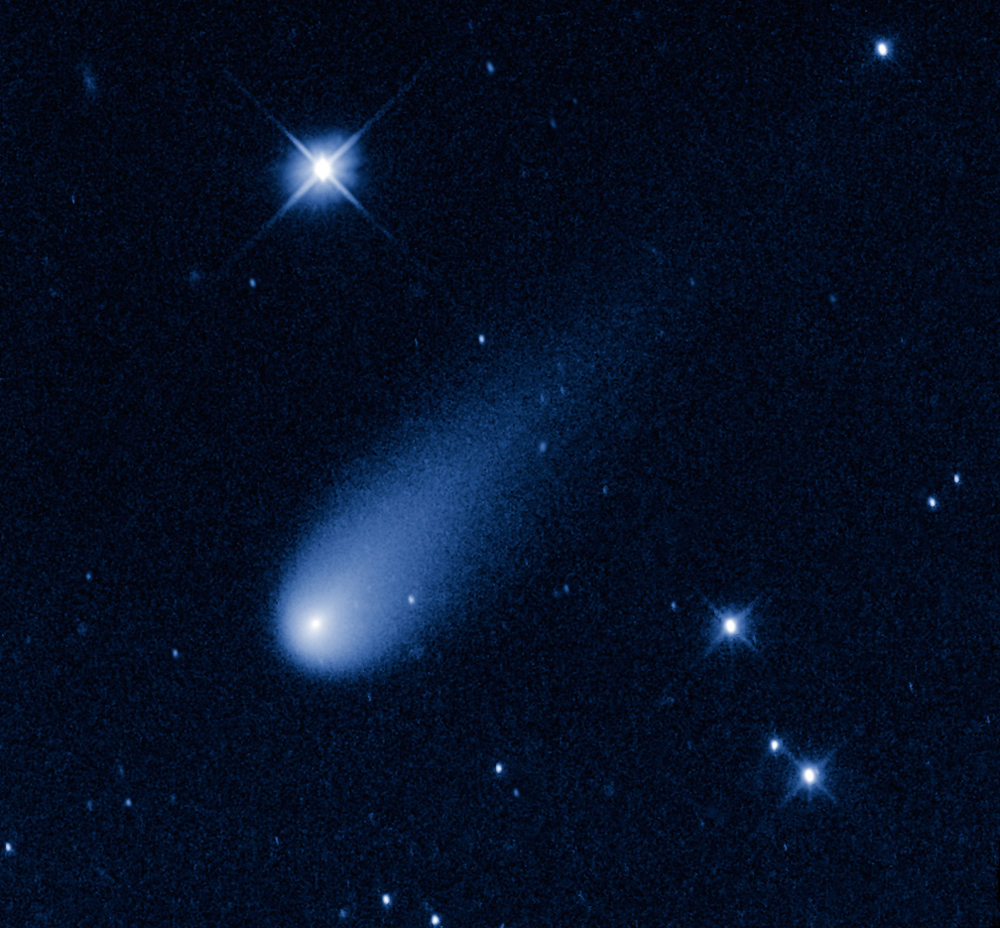Scientists Discuss 'Comet of the Century' in Comet ISON Workshop: Watch It Live

Scientists will be meeting Thursday (Aug. 1) and Friday (Aug. 2) to form a game plan for observing what could be the "comet of the century," comet ISON, due to pass close to the sun this November.
During a workshop at the Johns Hopkins University Applied Physics Laboratory (APL) in Laurel, Md., researchers will discuss what they know, and what they hope to learn, about the comet. While there's no telling just how bright comet ISON will be, observers say it has the potential to be as luminous as the full moon.
The workshop will be webcast from 9 a.m. EDT to 5 p.m. EDT both days. You can watch live here on SPACE.com, directly at the workshop homepage, or at LiveStream.
"This is an extraordinary event," APLs Carey Lisse, head of NASA's Comet ISON Observation Campaign and organizer of the workshop, said in a statement. "Comet ISON will help show us what the recipe for building the solar system was. Comets like ISON are the dinosaur bones of solar system formation." [Photos of Comet ISON: A Potentially Great Comet]
Workshop panels will discuss the comet’s nucleus, its content of organic chemicals, and how its interaction with the sun will likely play out. Comet ISON is thought to be made of the same ingredients that formed Earth and the planets in our solar system, so it offers the potential to teach scientists more about the history of our place in the cosmos.
ISON is named after the International Scientific Optical Network, the organization behind the comet's discovery in September 2012. The object belongs to a class called sungrazing comets, which can skim the surface of the sun's atmosphere as they make their closest approaches.
"It remains difficult to predict exactly how bright the comet will become in November," Lisse said. "However, the potential exists for this to be one of the brightest comets of the past century. We encourage observers from around the world to study this fascinating comet."
Get the Space.com Newsletter
Breaking space news, the latest updates on rocket launches, skywatching events and more!
Comet's ISON's closest approach to the sun will occur on Nov. 28, 2013. At that point, the comet ISON is expected to get as close as 800,000 miles (1.2 million km) from the sun's surface.
NASA is coordinating an observing campaign to watch the comet as it makes its inward journey. The project will use space telescopes, ground-based observatories and a program of high-altitude balloons called the Balloon Rapid Response for ISON (BRRISON).
Follow Clara Moskowitz on Twitter and Google+. Follow us @Spacedotcom, Facebook and Google+. Original article on SPACE.com.
Join our Space Forums to keep talking space on the latest missions, night sky and more! And if you have a news tip, correction or comment, let us know at: community@space.com.

Clara Moskowitz is a science and space writer who joined the Space.com team in 2008 and served as Assistant Managing Editor from 2011 to 2013. Clara has a bachelor's degree in astronomy and physics from Wesleyan University, and a graduate certificate in science writing from the University of California, Santa Cruz. She covers everything from astronomy to human spaceflight and once aced a NASTAR suborbital spaceflight training program for space missions. Clara is currently Associate Editor of Scientific American. To see her latest project is, follow Clara on Twitter.









